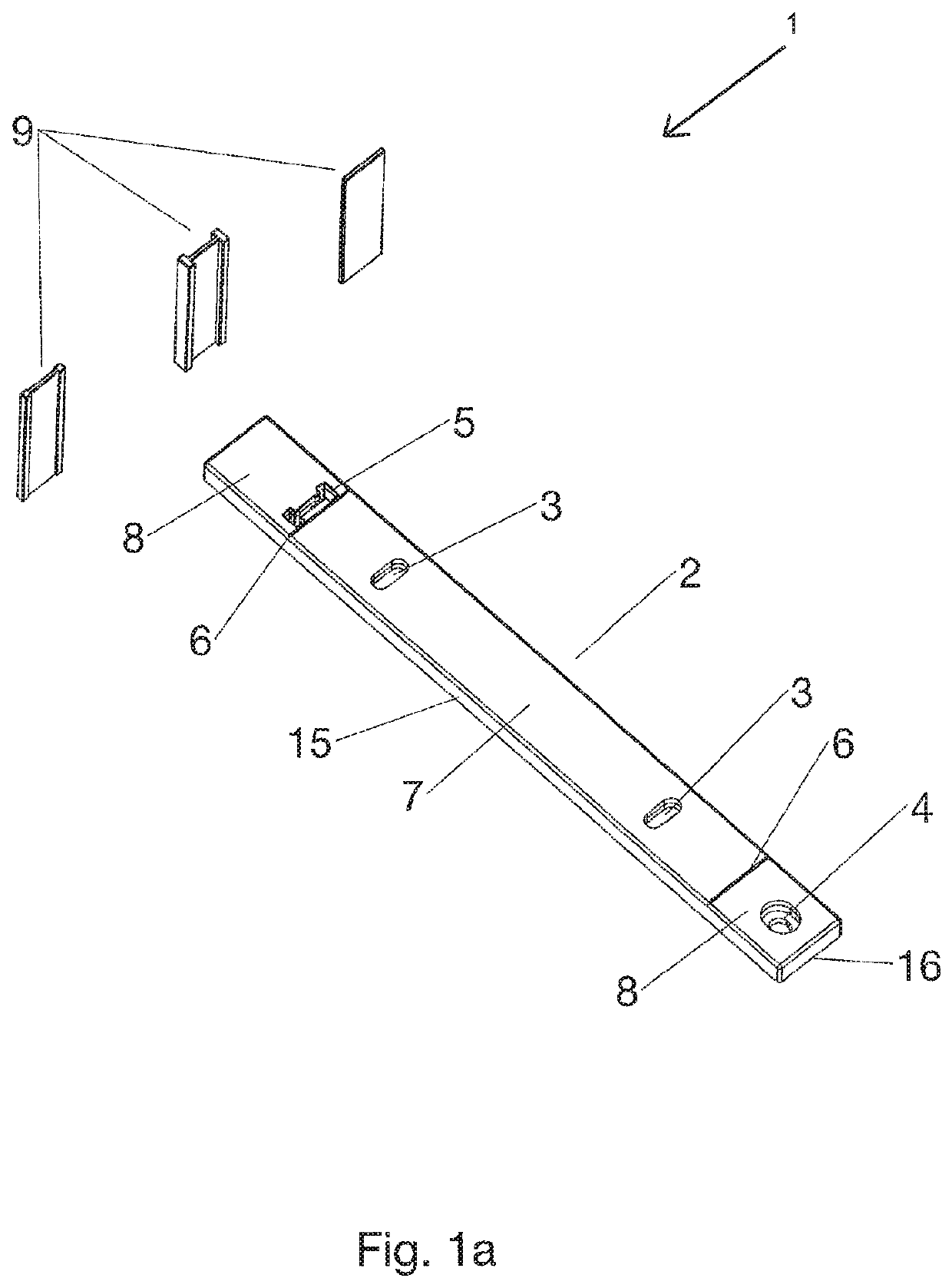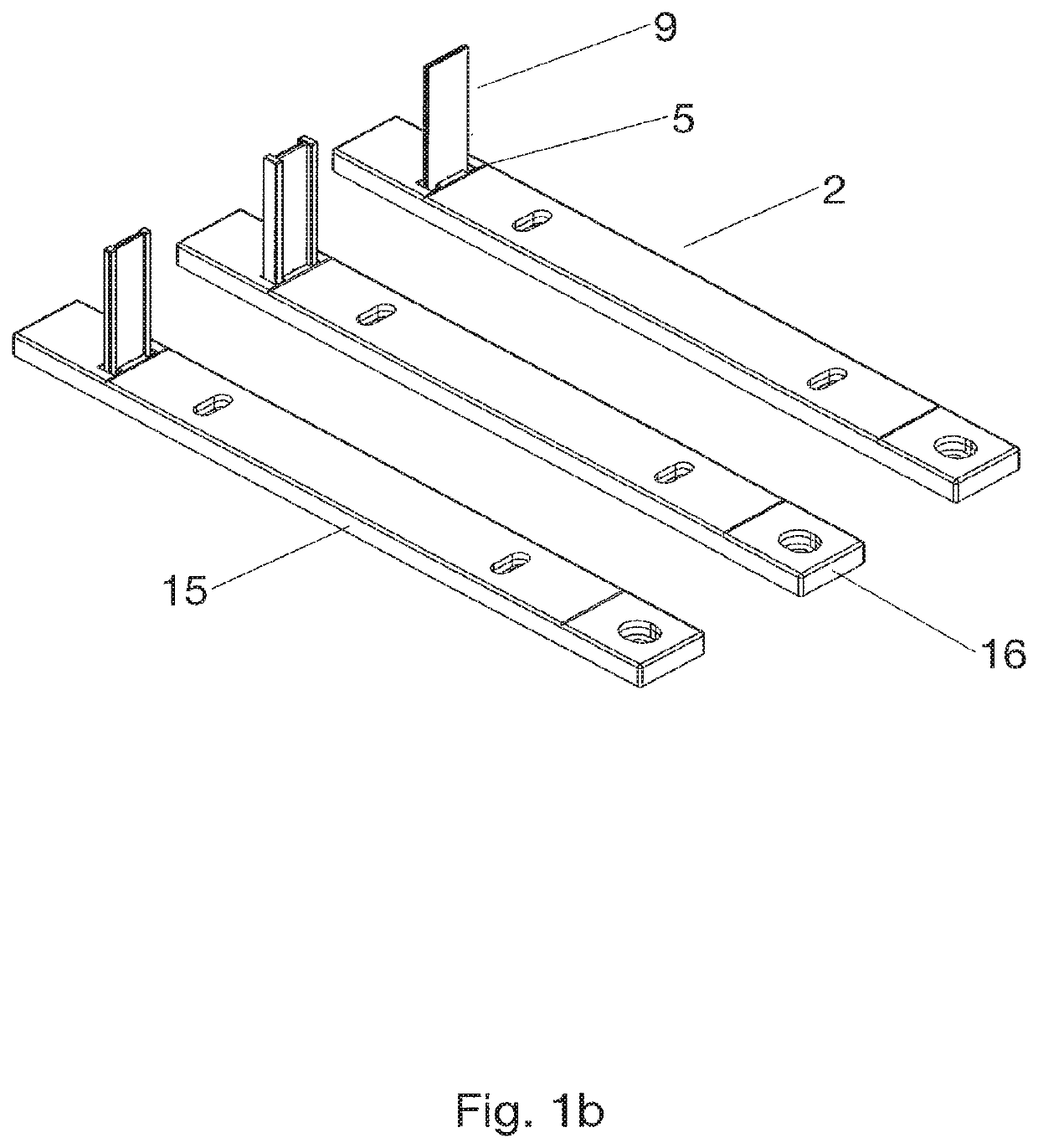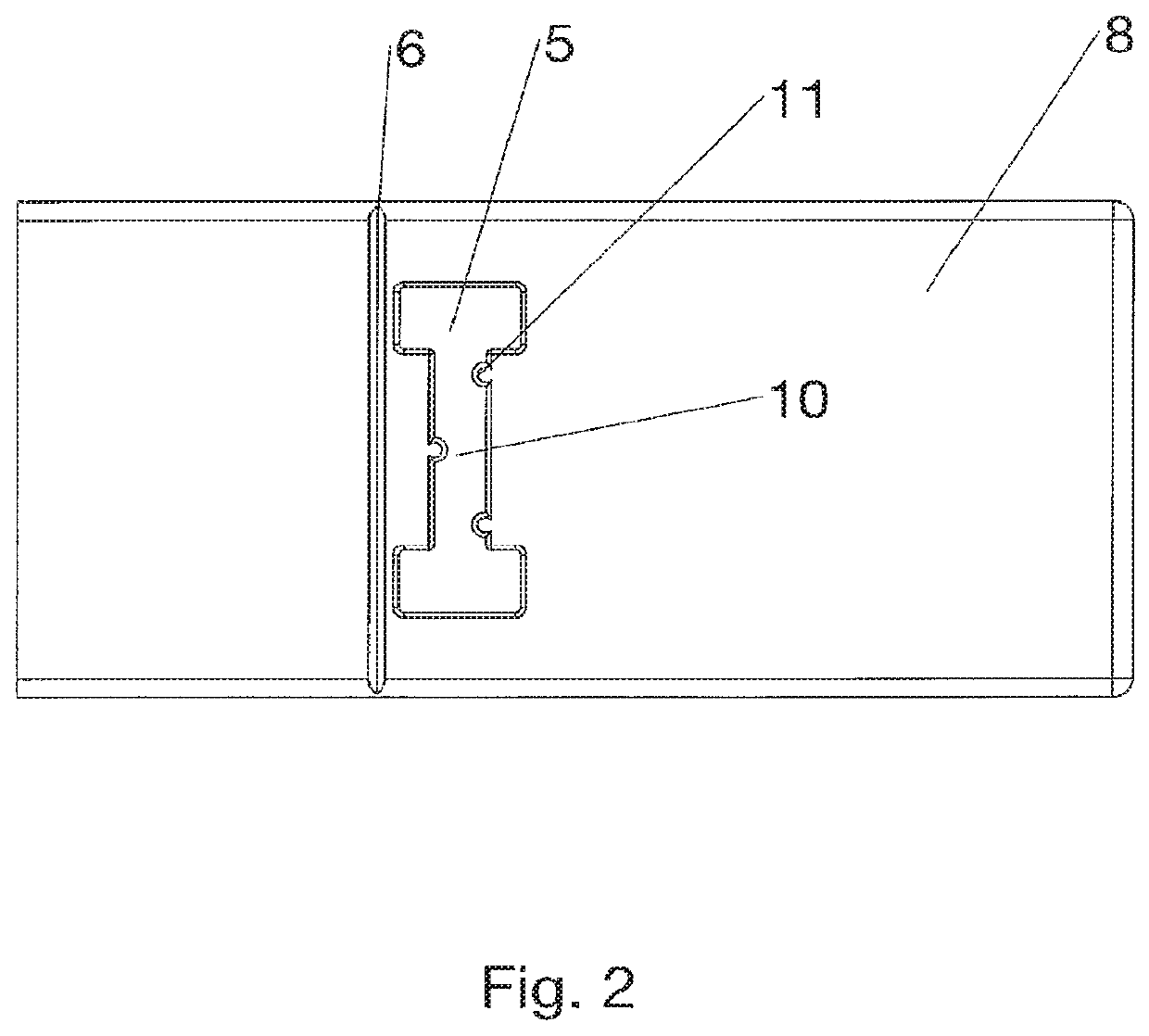Fitting for laying decking boards
a technology for connecting panels and decking, applied in the direction of flooring, covering/lining, construction, etc., can solve problems such as deformation of floor surfaces, and achieve the effect of convenient movemen
- Summary
- Abstract
- Description
- Claims
- Application Information
AI Technical Summary
Benefits of technology
Problems solved by technology
Method used
Image
Examples
Embodiment Construction
[0035]FIGS. 1a and 1b show an elongate, rectangular main body 2 according to the invention, having two longer sides 15 and two shorter sides 16, said main body 2 having three different fastening devices 3, 4, 5. The first fastening device 3 is provided twice as a through-opening in the form of an oblong hole in the central region 7 of the main body 2, in particular with the long side parallel to the shorter sides 16. These advantageously allow the fitting to shift when the dimensions of the board change, without a screw that passes through the oblong hole tearing out. Of course, round or polygonally configured through-openings are also in accordance with the invention, in particular when carriage bolts are intended to be used as fastening means. The second fastening device 4 is likewise in the form of a through-opening, but in this case with a stepped radius, as seen axially, in order to allow a fastening means 12 to be countersunk, resulting in a flat surface. This allows clean int...
PUM
 Login to View More
Login to View More Abstract
Description
Claims
Application Information
 Login to View More
Login to View More - R&D
- Intellectual Property
- Life Sciences
- Materials
- Tech Scout
- Unparalleled Data Quality
- Higher Quality Content
- 60% Fewer Hallucinations
Browse by: Latest US Patents, China's latest patents, Technical Efficacy Thesaurus, Application Domain, Technology Topic, Popular Technical Reports.
© 2025 PatSnap. All rights reserved.Legal|Privacy policy|Modern Slavery Act Transparency Statement|Sitemap|About US| Contact US: help@patsnap.com



